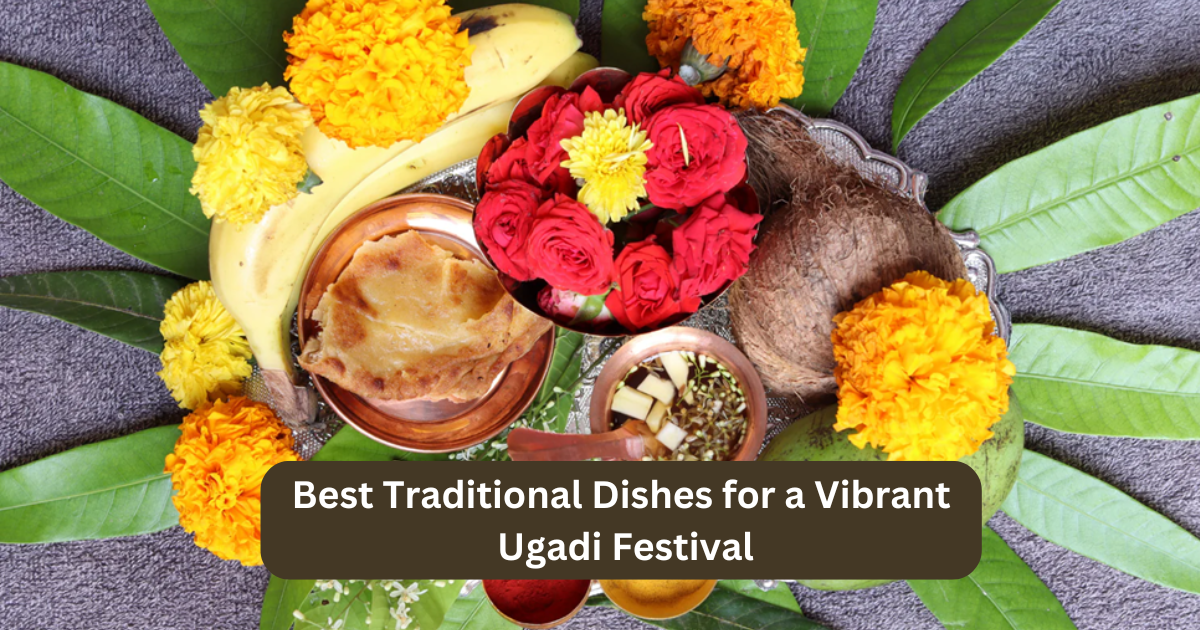Ugadi, the South Indian New Year, is a vibrant festival with colours, customs, and a traditional feast. Unlike the Gregorian New Year, which focuses on resolutions, Ugadi celebrates a fresh start with a symphony of flavours. Dhanush Kumar writes about the unique dishes representing the hopes and aspirations for the year ahead.
Ugadi Pachadi

No Ugadi table is complete without the Ugadi Pachadi. This unique dish is a harmonious blend of six tastes- sweet, sour, salty, bitter, spicy, and astringent- signifying life’s inevitable mix of experiences. Each taste is carefully incorporated with ingredients like jaggery, neem flowers, raw mango, lentils, and salt. The resulting concoction is a flavourful reminder that life is a beautiful tapestry woven with joys, sorrows, triumphs, and challenges.
Sweet Beginnings

Ugadi is a time for optimism and new beginnings, reflected perfectly in the sweet dishes gracing the festival table. Puran Poli, a flatbread stuffed with a sweet lentil and jaggery filling, is a warm and comforting treat. Obbattu, another popular option, features flaky flatbreads enclosing a delightful mix of coconut, lentil paste, and jaggery. These melt-in-your-mouth delights symbolize the sweetness and hope we carry into the New Year.
Savoury Delights

The Ugadi menu doesn’t shy away from savoury elements, acknowledging the importance of resilience and strength. Pulihora, a tangy tamarind rice dish, is a vibrant and flavourful symbol of life’s zest. Mavinakayi Chitranna, a raw mango rice dish, adds a refreshing twist with its unique blend of sweet and savoury notes. These dishes, bursting with flavour, represent the challenges and triumphs that shape our lives.
Fritters

Ugadi festivities are incomplete without a generous helping of fried delicacies. Garelu or Vadas are crispy lentil fritters, symbolizing prosperity and abundance. Punugulu, deep-friend balls made with rice flour and lentil stuffing, add a delightful textural contrast to the meal. These golden-hued fritters represent the blessings and bounty we hope to receive in the New Year.
A Sweet Ending

As the Ugadi feast draws to a close, a touch of sweetness lingers. Payasam, a creamy rice pudding flavoured with jaggery and nuts, symbolizes fulfilled desires and a happy life. Bellam Paramannam, a flat rice pudding with jaggery and ghee, adds a touch of richness to the finale. These sweet endings represent the hope for a year filled with joy and the fulfilment of our aspirants.
Conclusion
The Ugadi feast is more than just a meal. It is a cultural touchstone passed down through generations. Each dish embodies a philosophy, a reminder of life’s complexities and the beauty of embracing them all. As you savour these delectable dishes, take a moment to appreciate the rich tapestry of tradition and the promise of a vibrant New Year.





























